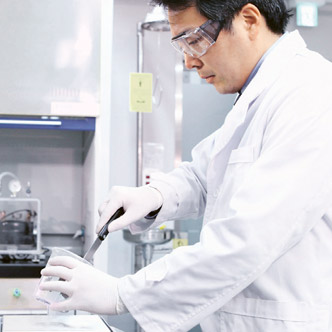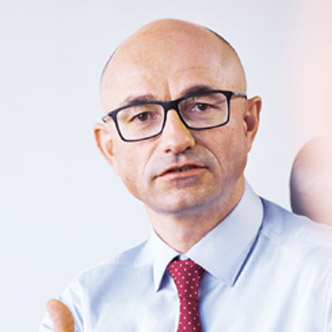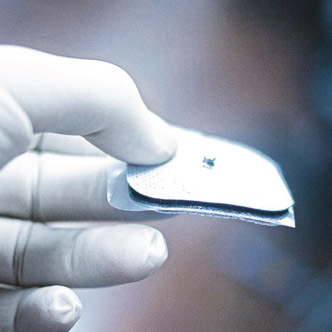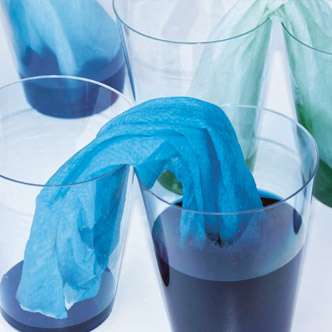Five Questions – On Course for Growth with Silicones
Interview with Dr. Robert Gnann, President of WACKER SILICONES
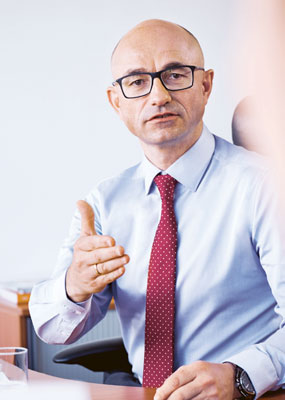
1 –
WACKER is currently the world’s No. 2 silicones producer. What is your strategy for further growth?
Dr. Gnann: We have a clear goal. We want to continue growing at over 4 percent per year – significantly faster than the global chemical industry. We have created the best conditions for this with our full-scale production plants for upstream products. Now, we are selectively expanding our capacities for downstream products. In the USA, we are currently building a new pyrogenic silica plant in order to become the No. 2 producer in this business. At the same time, we are continuing to expand our consultancy and service portfolio – particularly in growth regions such as Asia and South America, where we have a policy of using strong, locally based teams that work closely with customers. As far as our products are concerned, we want to offer more high-quality specialties, while also continually optimizing our technologies and processes – thus further improving our cost position.
2 –
What makes WACKER SILICONES better than its rivals? In other words, how do you hold your own against the competition?
Dr. Gnann: One of our biggest strengths is the comprehensive customer service our first-rate specialists provide all over the world. We operate over a dozen technical competence centers across five continents. This proximity to our customers, understanding their requirements and developing solutions with them is what distinguishes us from many of our competitors.
A good example of our extensive customer policy can be seen in South Korea. We have our Center of Excellence for Electronics Applications there, and work hand in hand with the world’s leading electronics companies to develop new solutions. In the USA, we are currently building a new research center at Ann Arbor. Customers get far more from us than just silicone: they gain a highly experienced advisor and reliable development partner, who has a detailed understanding of their needs, and helps them to reach their goals.

3 –
So the aim is to keep on improving silicones and modifying their properties for new applications?
Dr. Gnann: Yes, but not only that. We are heavily reliant on fundamental innovations. Take 3D printing of silicone parts, for example. Until recently, there was no mature industrial 3D printing technology available for silicones. We developed everything from scratch – starting with the technology and the specialty silicone through to control software for the printer.

4 –
That doesn’t sound like a business that will consume thousands of tons of silicone per year. Do you see WACKER SILICONES’ future in niche applications?
Dr. Gnann: First, I don’t think it’s at all justified to assume that 3D printing will remain a niche application. The technology may still be young, but it has enormous potential. However, it’s true that global-scale plants like the ones we operate will never be utilized to capacity just by producing specialty products. We also need commodity silicones, which are in huge demand. The issue here is to produce materials of uniformly high quality at the lowest possible cost. We are pursuing an optimum-mix strategy, not only offering high-efficiency production of commodity silicones, but also a growing share of tailored specialties that add value for customers.
5 –
WACKER already manufactures over 3,000 different silicone grades, which are used in almost every area of industry, from construction to electronics. Won’t the range of new applications be exhausted sooner or later?
Dr. Gnann: I’ve got no worries on that score. First, new technologies that use silicones are coming along all the time. Just think of electromobility. Second, existing applications are being continually enhanced. The traditional self-adhesive plaster complete with wound dressing is almost 100 years old, but wound dressings with silicones set entirely new benchmarks. They are soft, flexible, breathable and adhere securely, yet can be peeled off much less painfully afterward.
And we can even modify established products such as silicone fluids so that they can be used as heat-transfer media in solar thermal power generators, where they significantly improve efficiency. These are just two examples of many. I’m convinced silicones will demonstrate their superior properties in many applications that we haven’t even thought of yet. There are no limits to the creativity of our outstanding teams around the world.

